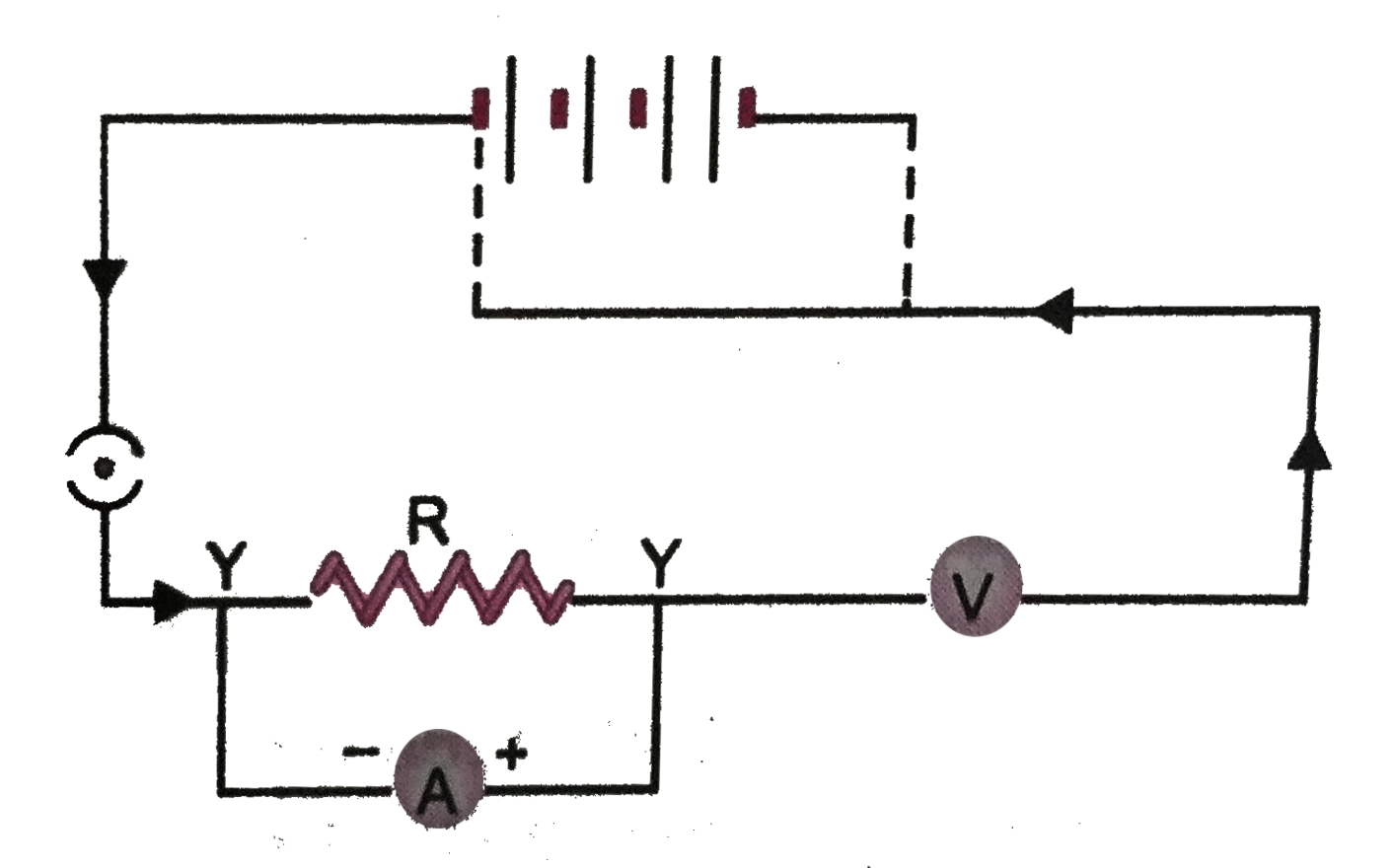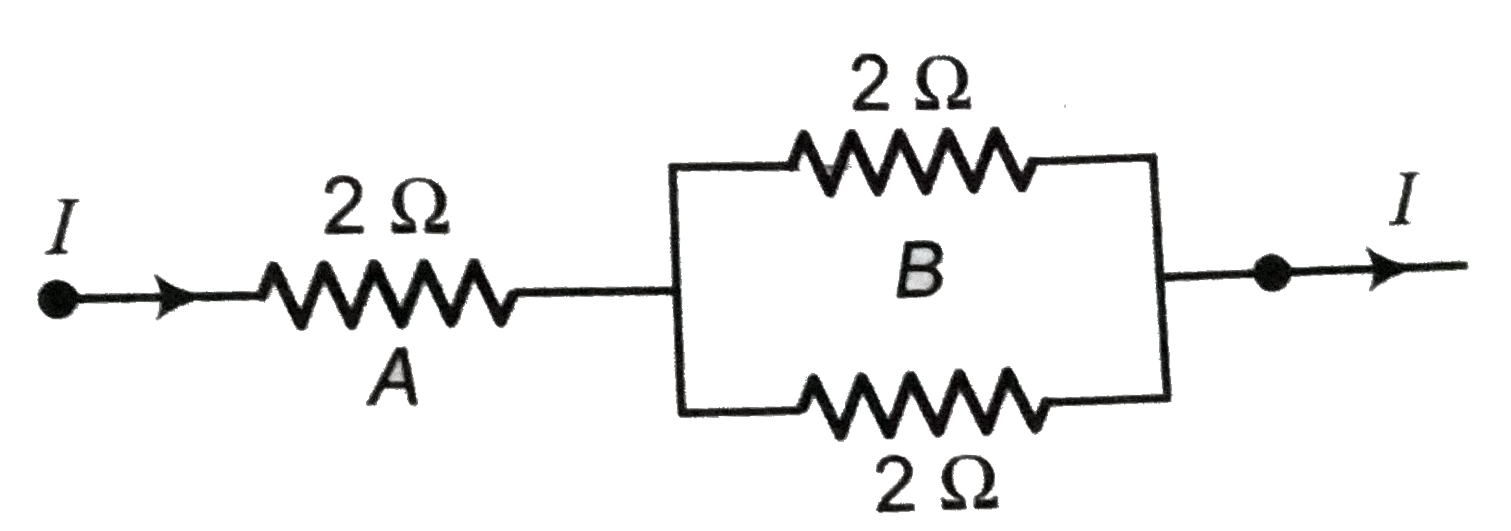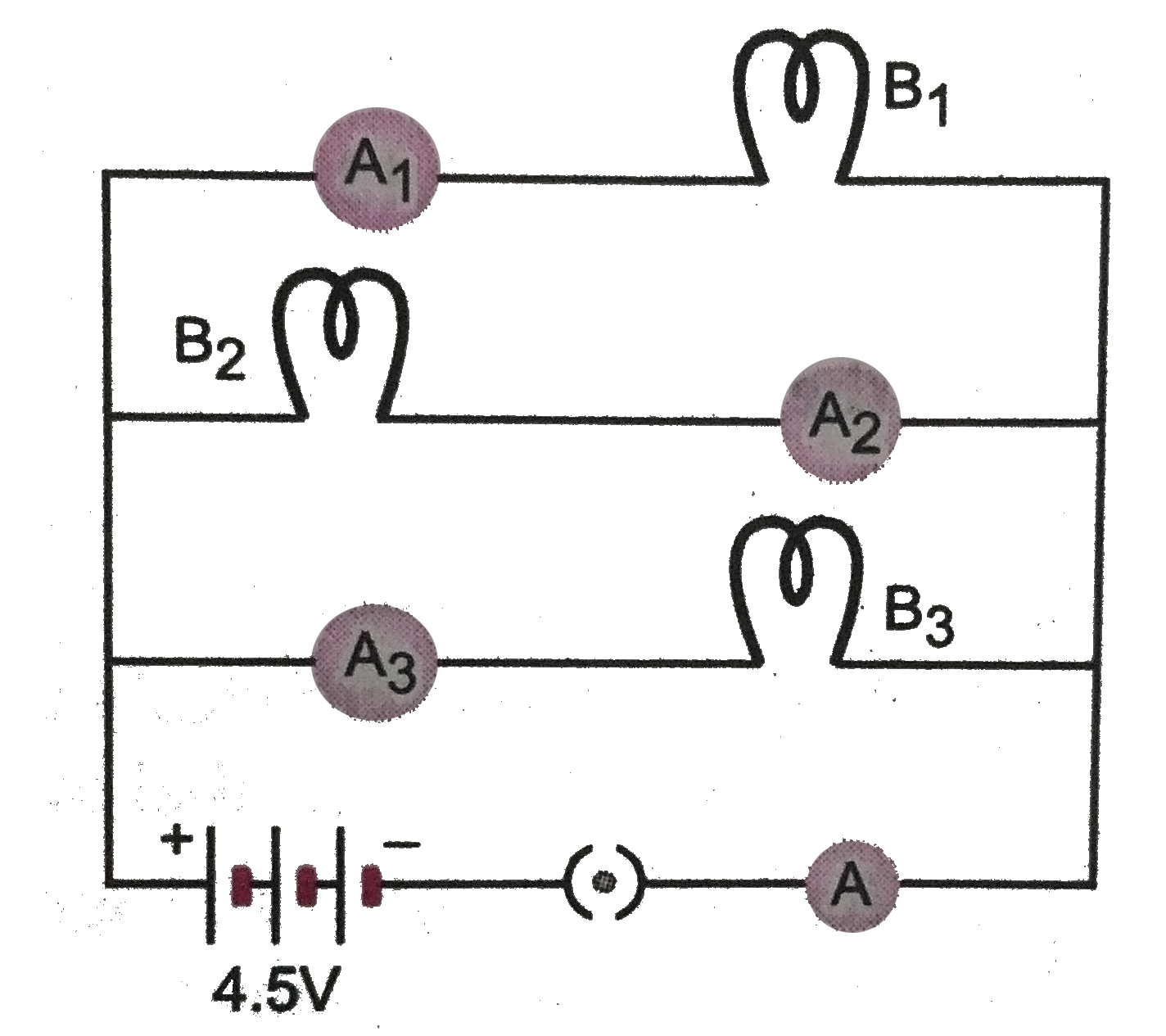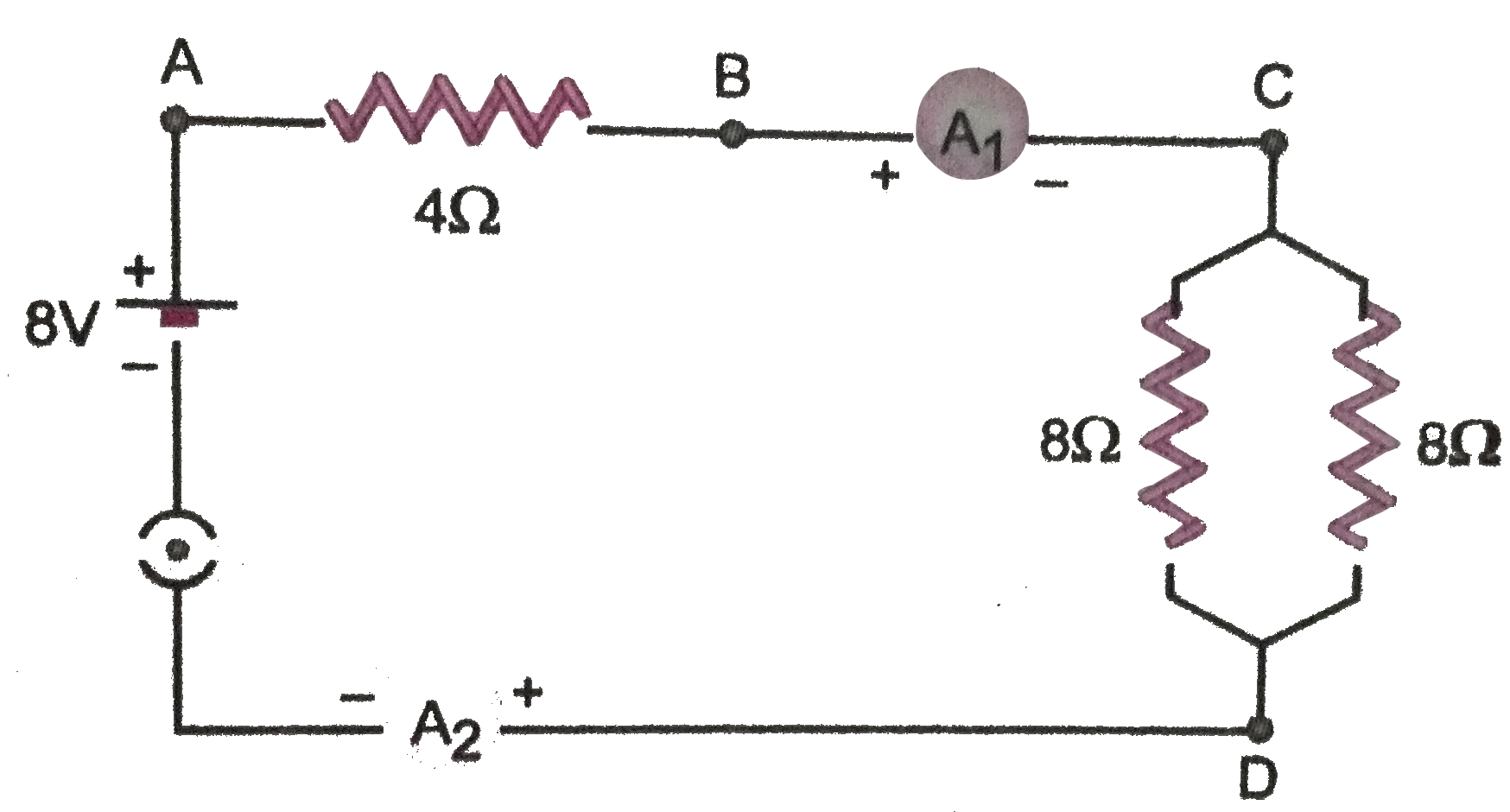Complete Solutions to Short Answer Type Questions of chapter ELECTRICITY of Class 10 book with complete answers and questions
| Class 10 | PHYSICS |
| Chapter | ELECTRICITY |
| NCERT EXEMPLAR | Short Answer Type Questions |
| Number Of Questions | 17 |
| Academic Year | 2023-24 |
A child has drawn the electric circuit to study Ohm's law as shown in (Fig. 3.42). His teacher told him that the circuit diagram needs correction. Study the circuit diagram and redraw it after making all corrections.
 .05:19View Solution
.05:19View SolutionThree `2 Omega` resistors, A, B and C are connected as shown in figure. Each of them dissipates energy and can with stand a maximum power of 18 W without melting. Find the maximum current that can flow through the three resistors ?
 02:56View Solution
02:56View SolutionShould the resistance of an ammeter be low or high ? Give reason.
01:31View SolutionDraw a circuit diagram of an electric circuit containing a cell, a key, an ammeter, a resistance of `2 Omega` in series with a combination of two resistors (`4 Omega` each) in parallel and a voltmeter across the parallel combination. Will the potential difference across the `2 Omega` resistor be the same as that across the parallel combination of `4 Omega` resistors ? Give reason.
04:39View SolutionHow does use of a fuse-wire protect electrical appliances ?
02:33View SolutionWhat is electrical resistivity ? In a series electrical circuit comprising a resistor made up of a matallic wire, the ammeter reads `5 A`. The reading of the ammeter decreases to half when the length of the wire is doubled. Why ?
03:28View SolutionWhat is the commercial unit of electrical energy ? Represent it in terms of joules.
02:13View Solution(a) A current of `1 A` flows in a series curcuit containing an electric lamp and a conductor of `5 Omega` when connected to a `10 V` battery. Calculate the resistance of the electric lamp.
(b) Now if a resistance of `10 Omega` is connected in parallel with this series combination, what change (if any) in current flowing through `5 Omega` conductor and potential difference across the lamp will take place ? Give reason.05:34View SolutionWhy is parallel arrangement used in domestic wiring ?
03:11View Solution`B_1,B_2 and B_3` are three identical bulbs connected as shown in (fig. 3.46). When all the three bulbs glow, a current of `3 A` is recorded by the ammeter `A`.
(i) What happens to the glow of the other two bulbs when the bulb `B_1` gets fused ?
(ii) What happens to the readings of `A_1,A_2,A_3 and A` when the bulb `B_2` gets fused ?
(iii) How much power is dissipated in the circuit when all the three bulbs glow together ?
 .04:50View Solution
.04:50View SolutionThree incandecent bulbs of `100 W` each are connected in series in an electric circuit. In another circuit another set of three bulbs of the same wattage are connected in parallel to the same source.
(a) Will the bulbs in the two circuits glow with the same brightness ? Justify your answer.
(b) Now let one bulb in both the circuits get fused. Will the rest of the bulbs continue to glow in each circuit ? Give reason.05:30View SolutionState Ohm's law ? How can it be verified experimentally ? Does it hold good under all conditions ? Comment.
05:23View SolutionWhat is electrical resistivity ? How does it depend om temperature. Give its `SI` unit.
03:51View SolutionHow will you infer with the help of an experiment that the same current flows through every part of the circuit containing three resistances in series connected to a battery ?
03:43View SolutionHow will you conclude that the same potential difference (voltage) exists across three resistors connected in a parallel arrangement to a battery ?
02:20View SolutionWhat is Joule's heating effect ? How can it be demonstrated experimentally ? List its four applications in daily life.
06:37View SolutionFind out the folowing in the electric circuit given in (Fig. 3.48).
(a) Effective resistance of two `8 Omega` resistors in the combination
(b) Current flowing through `4 Omega` resistor
( c) Potential difference across `4 Omega` resistance
(d) Power dissipated in `4 Omega` resistor
(e) Difference in ammeter readings, if any.
 .05:54View Solution
.05:54View Solution
Short Answer Type Questions questions and complete solutions for chapter ELECTRICITY of NCERT PHYSICS (ENGLISH) of Class 10
